The American League has been in a really interesting place the past couple of years. While the Nationals, Cubs and Dodgers have ruled the NL divisions and a relatively small group of the usual suspects competed for the two NL wild-card spots, the AL has essentially been a free-for-all, with no great or even very good clubs.
The Astros' breakaway in the standings has put a major dent in that narrative in 2017, but it's still chaos beyond them. You could make a strong case that 12 of the 15 AL clubs are contenders, including the entire East. What are the top 20 strengths of 11 of those clubs? (I just can't rationalize including an entire division; sorry, Orioles fans.)
 20. Rangers manager Jeff Banister: Before Banister became the skipper in Texas, I had heard him mentioned as baseball's next exceptional manager by more than one insider. I'm not one to over- or underestimate a manager's contribution, but Banister is one of a few current managers who can add wins to the bottom line. Random chance played a role, but the Rangers' overperformance last year was stunning, and Banister played a part. The Rangers are an utterly nondescript club that is hanging in, biding its time, and could potentially remain a factor all year.
20. Rangers manager Jeff Banister: Before Banister became the skipper in Texas, I had heard him mentioned as baseball's next exceptional manager by more than one insider. I'm not one to over- or underestimate a manager's contribution, but Banister is one of a few current managers who can add wins to the bottom line. Random chance played a role, but the Rangers' overperformance last year was stunning, and Banister played a part. The Rangers are an utterly nondescript club that is hanging in, biding its time, and could potentially remain a factor all year.
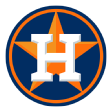 19. The Astros' secret bullpen weapon: Chris Devenski is not so secret a weapon anymore. There are a lot of good relief pitchers in both leagues, but the vast majority of them are criminally underused. Is there some sort of unwritten rule that ace relievers or closers turn into pumpkins if they're used for over 60 innings? Devenski is roughly on a 90-inning pace, a throwback to the days when the best reliever on a club logged the most innings.
19. The Astros' secret bullpen weapon: Chris Devenski is not so secret a weapon anymore. There are a lot of good relief pitchers in both leagues, but the vast majority of them are criminally underused. Is there some sort of unwritten rule that ace relievers or closers turn into pumpkins if they're used for over 60 innings? Devenski is roughly on a 90-inning pace, a throwback to the days when the best reliever on a club logged the most innings.
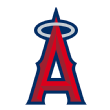 18. The Angels' rotation cavalry: The Angels are one of two AL West clubs to somehow remain relevant despite the loss of most of their quality starting pitchers (plus some other guy we'll discuss later). They somehow remain in the top half of the league in starters' ERA, as J.C. Ramirez and Jesse Chavez have stepped up nicely, but you have to think that the returns of Tyler Skaggs and possibly Garrett Richards later this summer from long-term absences -- plus the more imminent return of Matt Shoemaker from a brief DL stint -- will give the Halos a nice boost.
18. The Angels' rotation cavalry: The Angels are one of two AL West clubs to somehow remain relevant despite the loss of most of their quality starting pitchers (plus some other guy we'll discuss later). They somehow remain in the top half of the league in starters' ERA, as J.C. Ramirez and Jesse Chavez have stepped up nicely, but you have to think that the returns of Tyler Skaggs and possibly Garrett Richards later this summer from long-term absences -- plus the more imminent return of Matt Shoemaker from a brief DL stint -- will give the Halos a nice boost.
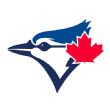 17. The Blue Jays' youthful rotation tag team: Marcus Stroman and Aaron Sanchez form one of the more dynamic young one-two punches atop any MLB rotation. With Sanchez missing an extended period with a blister issue, Stroman has had to go it alone. The diminutive Duke product has taken the next step, showing improved durability and command within the strike zone. He has always induced tons of grounders, and this year they haven't been hit as hard. Sanchez wasn't as good as his ERA last season, but is a prolific ground baller in his own right. His return in early July should give the Jays a lift.
17. The Blue Jays' youthful rotation tag team: Marcus Stroman and Aaron Sanchez form one of the more dynamic young one-two punches atop any MLB rotation. With Sanchez missing an extended period with a blister issue, Stroman has had to go it alone. The diminutive Duke product has taken the next step, showing improved durability and command within the strike zone. He has always induced tons of grounders, and this year they haven't been hit as hard. Sanchez wasn't as good as his ERA last season, but is a prolific ground baller in his own right. His return in early July should give the Jays a lift.
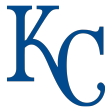 16. The Royals' health: There are a number of reasons for the Royals' success in recent years. Their team defense would have to sit at or near the top of the list. How about a slightly more subtle attribute? Their regulars often post the highest percentage of a club's plate appearances over a given season. Sure, lack of platoons is a factor, but so is athleticism and durability. Salvador Perez, Eric Hosmer, Alcides Escobar and most of their friends are in the lineup more than their positional brethren. In the case of Escobar and Alex Gordon this year, that hasn't been great news -- but generally more playing time for regulars means less for replacement level backups.
16. The Royals' health: There are a number of reasons for the Royals' success in recent years. Their team defense would have to sit at or near the top of the list. How about a slightly more subtle attribute? Their regulars often post the highest percentage of a club's plate appearances over a given season. Sure, lack of platoons is a factor, but so is athleticism and durability. Salvador Perez, Eric Hosmer, Alcides Escobar and most of their friends are in the lineup more than their positional brethren. In the case of Escobar and Alex Gordon this year, that hasn't been great news -- but generally more playing time for regulars means less for replacement level backups.
 15. The Rays' cost-controlled rotation: The Rays' financial resources are among the most limited of all MLB clubs, so they cannot compete without young, cost-controlled starters. They inked ace Chris Archer to a team-friendly extension. At 28, he's the leader of an under-30 group that presently includes Alex Cobb (29), Jake Odorizzi (27), Jacob Faria (23) and swingman Erasmo Ramirez (27). They're among the AL leaders in innings pitched by their rotation and all of their starters throw tons of strikes, a recipe to keep your club in the game most nights.
15. The Rays' cost-controlled rotation: The Rays' financial resources are among the most limited of all MLB clubs, so they cannot compete without young, cost-controlled starters. They inked ace Chris Archer to a team-friendly extension. At 28, he's the leader of an under-30 group that presently includes Alex Cobb (29), Jake Odorizzi (27), Jacob Faria (23) and swingman Erasmo Ramirez (27). They're among the AL leaders in innings pitched by their rotation and all of their starters throw tons of strikes, a recipe to keep your club in the game most nights.
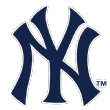 14. The back of the Yankees' bullpen: No, they don't use Dellin Betances and Aroldis Chapman in any sort of cutting-edge manner -- when both are healthy, it's the right-handed Betances in the eighth and then the lefty Chapman in the ninth. Both are likely to average less than an inning pitched per appearance. They're both so good, though. Betances was untouchable as a closer in Chapman's recent injury absence, and both are now healthy again. Their innings load isn't high, but almost two whiffs per inning works for me.
14. The back of the Yankees' bullpen: No, they don't use Dellin Betances and Aroldis Chapman in any sort of cutting-edge manner -- when both are healthy, it's the right-handed Betances in the eighth and then the lefty Chapman in the ninth. Both are likely to average less than an inning pitched per appearance. They're both so good, though. Betances was untouchable as a closer in Chapman's recent injury absence, and both are now healthy again. Their innings load isn't high, but almost two whiffs per inning works for me.
13. Josh Donaldson: Very quietly, Donaldson has become one of the most dominant offensive players since being traded from the A's to the Blue Jays prior to the 2015 season. The club got off to a dreadful start this season, and losing Donaldson for an extended period to a calf injury in mid-April didn't help. But now he's back and doing his thing, which would be posting an OPS+ in the general vicinity of 150.
 12. The Twins' young nucleus: We'll hear from a couple other young nuclei as we move up the list. No, I don't ultimately see the Twins as a contender -- just look at that run differential. Still, the combination of Miguel Sano, Byron Buxton, Max Kepler and Jose Berrios -- all aged 24 and under -- offers great hope for the future. Sano's baseball-brutalizing ways have been overshadowed by Aaron Judge to some extent, and Berrios' command within the strike zone has finally kicked in this season. Those two are the Twins' crown jewels, but Buxton's elite glove and Kepler's solid all-around game also contribute to the excitement in the Twin Cities.
12. The Twins' young nucleus: We'll hear from a couple other young nuclei as we move up the list. No, I don't ultimately see the Twins as a contender -- just look at that run differential. Still, the combination of Miguel Sano, Byron Buxton, Max Kepler and Jose Berrios -- all aged 24 and under -- offers great hope for the future. Sano's baseball-brutalizing ways have been overshadowed by Aaron Judge to some extent, and Berrios' command within the strike zone has finally kicked in this season. Those two are the Twins' crown jewels, but Buxton's elite glove and Kepler's solid all-around game also contribute to the excitement in the Twin Cities.
 11. Yu Darvish is on a mission: We've already mentioned their manager, but on the field, what exactly do the Texas Rangers do better than the opposition? Well, they have a healthy Yu Darvish, one of a relatively small number true No. 1 starters in the game. Oh, and did I mention that he's pitching for a massive free-agent contract? He's still only 30 years old, and his stuff has returned intact from his year-and-a-half absence due to Tommy John surgery. These guys just don't hit the free-agent market that often these days. This is a tenuous choice here, not because of Darvish but because a bad week for the club makes him a trade chip. But for now his presence fortifies the Rangers.
11. Yu Darvish is on a mission: We've already mentioned their manager, but on the field, what exactly do the Texas Rangers do better than the opposition? Well, they have a healthy Yu Darvish, one of a relatively small number true No. 1 starters in the game. Oh, and did I mention that he's pitching for a massive free-agent contract? He's still only 30 years old, and his stuff has returned intact from his year-and-a-half absence due to Tommy John surgery. These guys just don't hit the free-agent market that often these days. This is a tenuous choice here, not because of Darvish but because a bad week for the club makes him a trade chip. But for now his presence fortifies the Rangers.
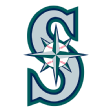 10. The Mariners' reinforced rotation: If I would have told you before the season that Mariners would get a total of 11 starts from Felix Hernandez, Hisashi Iwakuma and Drew Smyly in their first 75 games, and that James Paxton would also log DL time, would you have pegged them for a .500 record? I didn't think so. Yet here we are, and all four of them will be back in place before long. The Mariners might rank just 14th in the AL in starters' ERA, but they have received some solid performances from pitchers who will now fortify their bullpen. These guys are going to the playoffs.
10. The Mariners' reinforced rotation: If I would have told you before the season that Mariners would get a total of 11 starts from Felix Hernandez, Hisashi Iwakuma and Drew Smyly in their first 75 games, and that James Paxton would also log DL time, would you have pegged them for a .500 record? I didn't think so. Yet here we are, and all four of them will be back in place before long. The Mariners might rank just 14th in the AL in starters' ERA, but they have received some solid performances from pitchers who will now fortify their bullpen. These guys are going to the playoffs.
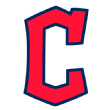 9. The Indians' late-inning hammer: Why do I put the Indians' Andrew Miller/Cody Allen tandem higher on this list than the Yanks' dynamic duo? Volume, volume, volume. The Indians might use their closer fairly conventionally, but Miller is the difference-maker. He's on pace to exceed 80 innings for the first time in his bullpen career, inserting him into high-leverage situations and allowing him to stick around. Bryan Shaw also carries a healthy innings load. The Indians' starters have struggled at times this season, but if they can reach October, their pen will again have an outsized impact.
9. The Indians' late-inning hammer: Why do I put the Indians' Andrew Miller/Cody Allen tandem higher on this list than the Yanks' dynamic duo? Volume, volume, volume. The Indians might use their closer fairly conventionally, but Miller is the difference-maker. He's on pace to exceed 80 innings for the first time in his bullpen career, inserting him into high-leverage situations and allowing him to stick around. Bryan Shaw also carries a healthy innings load. The Indians' starters have struggled at times this season, but if they can reach October, their pen will again have an outsized impact.
 8. The left side of the Indians' infield: As I said in the last bullet point, things haven't gone exactly as planned in Cleveland this year. Many of their regular position players have struggled; even Edwin Encarnacion started slow. Their left side of the infield, manned by 24-year-old Jose Ramirez and 23-year-old Francisco Lindor, has saved them. They've both ramped up their power output, and Ramirez has quietly emerged as an all-around force. Both are switch-hitters and both offer stellar defense. They're two of the premier position-player assets in the game.
8. The left side of the Indians' infield: As I said in the last bullet point, things haven't gone exactly as planned in Cleveland this year. Many of their regular position players have struggled; even Edwin Encarnacion started slow. Their left side of the infield, manned by 24-year-old Jose Ramirez and 23-year-old Francisco Lindor, has saved them. They've both ramped up their power output, and Ramirez has quietly emerged as an all-around force. Both are switch-hitters and both offer stellar defense. They're two of the premier position-player assets in the game.
 7. The Mariners' offense: This is how the Mariners stayed afloat while their pitchers were hurt. This isn't just about Robinson Cano and Nelson Cruz, two fine hitters near the end of their respective primes. Find me the "out" in their lineup. Taylor Motter? Sure, but Jean Segura is already back from the DL to man short. Mike Zunino? Nope, he has finally -- and against all odds -- overcome the initial rush to the majors that could have finished him. Ben Gamel and Mitch Haniger also say hi. If the M's keep scoring runs like this and their starters begin to yield a run less per game, where are they?
7. The Mariners' offense: This is how the Mariners stayed afloat while their pitchers were hurt. This isn't just about Robinson Cano and Nelson Cruz, two fine hitters near the end of their respective primes. Find me the "out" in their lineup. Taylor Motter? Sure, but Jean Segura is already back from the DL to man short. Mike Zunino? Nope, he has finally -- and against all odds -- overcome the initial rush to the majors that could have finished him. Ben Gamel and Mitch Haniger also say hi. If the M's keep scoring runs like this and their starters begin to yield a run less per game, where are they?
 6. The Astros' ground ball rotation: Launch angle has been all the rage this year, with some hitters like Yonder Alonso thriving thanks to an increase. Flying way under the radar is the Astros' historic ability to counteract this trend. Two ERA-qualifying starters have allowed an average launch angle below zero degrees -- Dallas Keuchel and Lance McCullers. Rotation-mate Charlie Morton acquits himself well in that respect as well. The bad news? They've all recently logged DL time, and need to get back in action to keep the Astros riding high.
6. The Astros' ground ball rotation: Launch angle has been all the rage this year, with some hitters like Yonder Alonso thriving thanks to an increase. Flying way under the radar is the Astros' historic ability to counteract this trend. Two ERA-qualifying starters have allowed an average launch angle below zero degrees -- Dallas Keuchel and Lance McCullers. Rotation-mate Charlie Morton acquits himself well in that respect as well. The bad news? They've all recently logged DL time, and need to get back in action to keep the Astros riding high.
 5. Mike Trout to the rescue: Kudos to the Angels for remaining relevant while the best player in baseball has missed substantial time due to a torn thumb ligament. This is still not a particularly distinguished Angel club, but it's better than its most recent iterations. I'll say it: In the wide-open AL, one wild card is coming from the West. The Mariners would be my first choice, with the Angels drafting behind them.
5. Mike Trout to the rescue: Kudos to the Angels for remaining relevant while the best player in baseball has missed substantial time due to a torn thumb ligament. This is still not a particularly distinguished Angel club, but it's better than its most recent iterations. I'll say it: In the wide-open AL, one wild card is coming from the West. The Mariners would be my first choice, with the Angels drafting behind them.
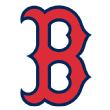 4. The Red Sox's Sale-to-Kimbrel connection: I would submit that the best starting pitcher in the AL to this point has been Chris Sale, and the best reliever has been Craig Kimbrel. If they were all the Red Sox had, it would be a pretty nice place to start. Sale might actually strike out 300 hitters this season, and Kimbrel is a pretty safe bet to strike out over half of the batters he faces. Their excellence would be magnified in a postseason scenario where your four best pitchers, two starters and two relievers, matter by far the most.
4. The Red Sox's Sale-to-Kimbrel connection: I would submit that the best starting pitcher in the AL to this point has been Chris Sale, and the best reliever has been Craig Kimbrel. If they were all the Red Sox had, it would be a pretty nice place to start. Sale might actually strike out 300 hitters this season, and Kimbrel is a pretty safe bet to strike out over half of the batters he faces. Their excellence would be magnified in a postseason scenario where your four best pitchers, two starters and two relievers, matter by far the most.
 3. Boston's Killer B's: It's all about having a young nucleus from here on out. We'll start in Boston, where we have the B's, from Xander Bogaerts to Andrew Benintendi to Jackie Bradley Jr. to Mookie Betts, all aged 27 or under, and all but Bradley 24 or under. You can almost overlay their offensive statistics; none are having anything near what will go down as their best season, but all are above-average performers for their respective positions. I'd bet at least three of these four step it up in the second half.
3. Boston's Killer B's: It's all about having a young nucleus from here on out. We'll start in Boston, where we have the B's, from Xander Bogaerts to Andrew Benintendi to Jackie Bradley Jr. to Mookie Betts, all aged 27 or under, and all but Bradley 24 or under. You can almost overlay their offensive statistics; none are having anything near what will go down as their best season, but all are above-average performers for their respective positions. I'd bet at least three of these four step it up in the second half.
 2. The Astros' young stars: The Astros tore down to the foundation and built back up on the backs of Carlos Correa, Jose Altuve, George Springer and McCullers. Interestingly, the middle two players were already in the organization when Jeff Luhnow came in to engineer the overhaul. Altuve is peaking, Springer has taken a big step forward and McCullers is a stud when he's healthy. All of that said, Correa is the most exciting one. Once his fly ball rate begins to rise -- and his power numbers follow -- exactly how good might he be?
2. The Astros' young stars: The Astros tore down to the foundation and built back up on the backs of Carlos Correa, Jose Altuve, George Springer and McCullers. Interestingly, the middle two players were already in the organization when Jeff Luhnow came in to engineer the overhaul. Altuve is peaking, Springer has taken a big step forward and McCullers is a stud when he's healthy. All of that said, Correa is the most exciting one. Once his fly ball rate begins to rise -- and his power numbers follow -- exactly how good might he be?
 1. The Yankees' youth movement: Aaron Judge has been a force of nature, literally and figuratively. Just ask a baseball. He has help, though. Gary Sanchez has proven that 2016 was not a fluke, and doing so as a regular catcher this time around. Don't forget Luis Severino, either -- he's 23, striking out over a batter per inning, throws tons of strikes and his ERA has been sitting around 3.00 while pitching his home games in Yankee Stadium. Their combined 2017 impact is why the Yankees are contending.
1. The Yankees' youth movement: Aaron Judge has been a force of nature, literally and figuratively. Just ask a baseball. He has help, though. Gary Sanchez has proven that 2016 was not a fluke, and doing so as a regular catcher this time around. Don't forget Luis Severino, either -- he's 23, striking out over a batter per inning, throws tons of strikes and his ERA has been sitting around 3.00 while pitching his home games in Yankee Stadium. Their combined 2017 impact is why the Yankees are contending.
